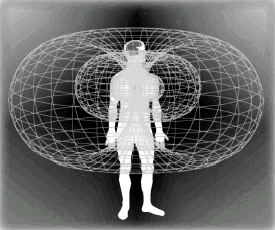They built a dynamic luminous ceiling which allows office dwellers to gaze at clouds without ever leaving their desks.
The privilege of working under the open sky is reserved for just a few lucky professions.
For the less fortunate majority, spending their working hours surrounded by gloomy office landscapes, the soothing sight of clouds drifting through the sky is unattainable. Setting up office cubicles in the open would do the trick but it’s hardly a practical option, especially in places where the weather cannot be trusted. Fortunately, researchers from the Fraunhofer Institute for Industrial Engineering (IAO), based in Stuttgart, Germany, know what else can be done to bring a little outdoor comfort to the office-bound. They built a dynamic luminous ceiling which allows office dwellers to gaze at clouds without ever leaving their desks.
As clouds shift shapes and move through the sky, the intensity of sunlight we experience on the ground is in constant flux. When replicated indoors, such lighting conditions could help entice the feeling of freedom and spaciousness that we associate with being outdoors. However, it takes more than attaching a set of your regular LCD TVs to a ceiling and playing footage of a cloudy sky to pull this off. The IAO researchers teamed up with LEiDs GmbH, an LED technology company, to make sure their ceiling simulates natural light conditions on a partially-cloudy day as accurately as possible.
The ceiling consists of square tiles, with each 50 by 50 cm (19.6 x 19.6 inch) tile holding 288 light emitting diodes (LEDs). “A diffuser film in matte white is attached approximately 30 cm [11.8 inches] beneath the LEDs and ensures that the individual points of light are not perceived as such. This diffuser film creates homogenous lighting that illuminates the room throughout” says Dr. Matthias Bues, head of the project at the IAO. A combination of red, blue, green and white diodes is used to produce the full light spectrum, which translates into over 16 million possible hues. This means the set-up is able to simulate dynamic changes in lighting conditions that are not immediately obvious to the naked eye. They may, however, influence your effectiveness at work.
For the simulation to be faithful, the researchers had to measure exactly how the light fluctuates throughout the day, such as how fast the changes in light spectrum take place and how intensive they are. The goal is to make the lighting dynamic enough to improve the office workers’ concentration and heighten their alertness, but not any more dynamic than that – otherwise, the whole thing would end up being just an unnecessary distraction.
A preliminary study shows that this dynamic lighting is indeed perceived as very pleasant. A group of volunteers carried out their office duties for four days subjected to light from a 30 by 60 cm set-up (that’s 12 by 24 inches). On the first day the light was static, on the second it fluctuated gently, and on the third the changes in lighting conditions were more rapid. On the fourth day, when the volunteers got to decide which lighting they’d like to continue working with, 80 percent went with the rapidly fluctuating light.
Bookmark this page for “LED lighting” and check back regularly as these articles update on a frequent basis. The view is set to “news”. Try clicking on “video” and “2” for more articles.









